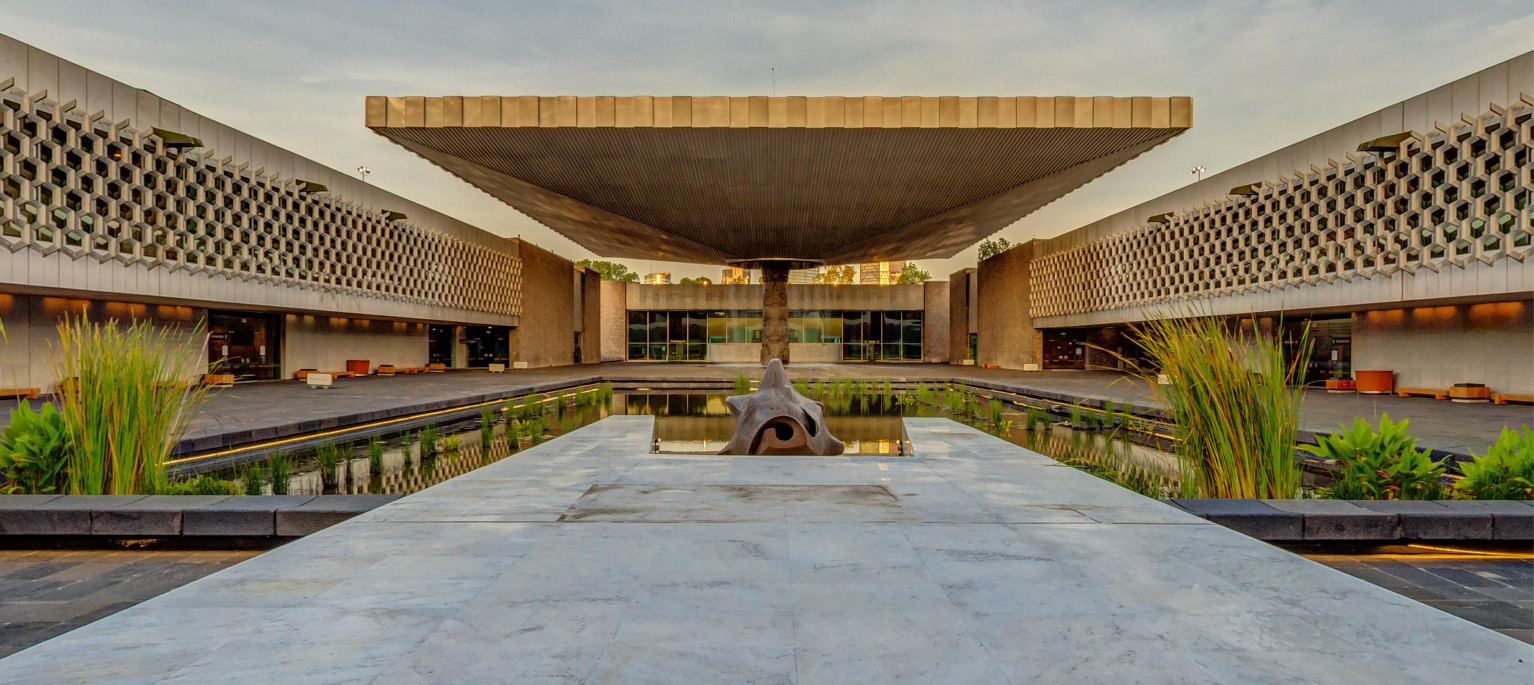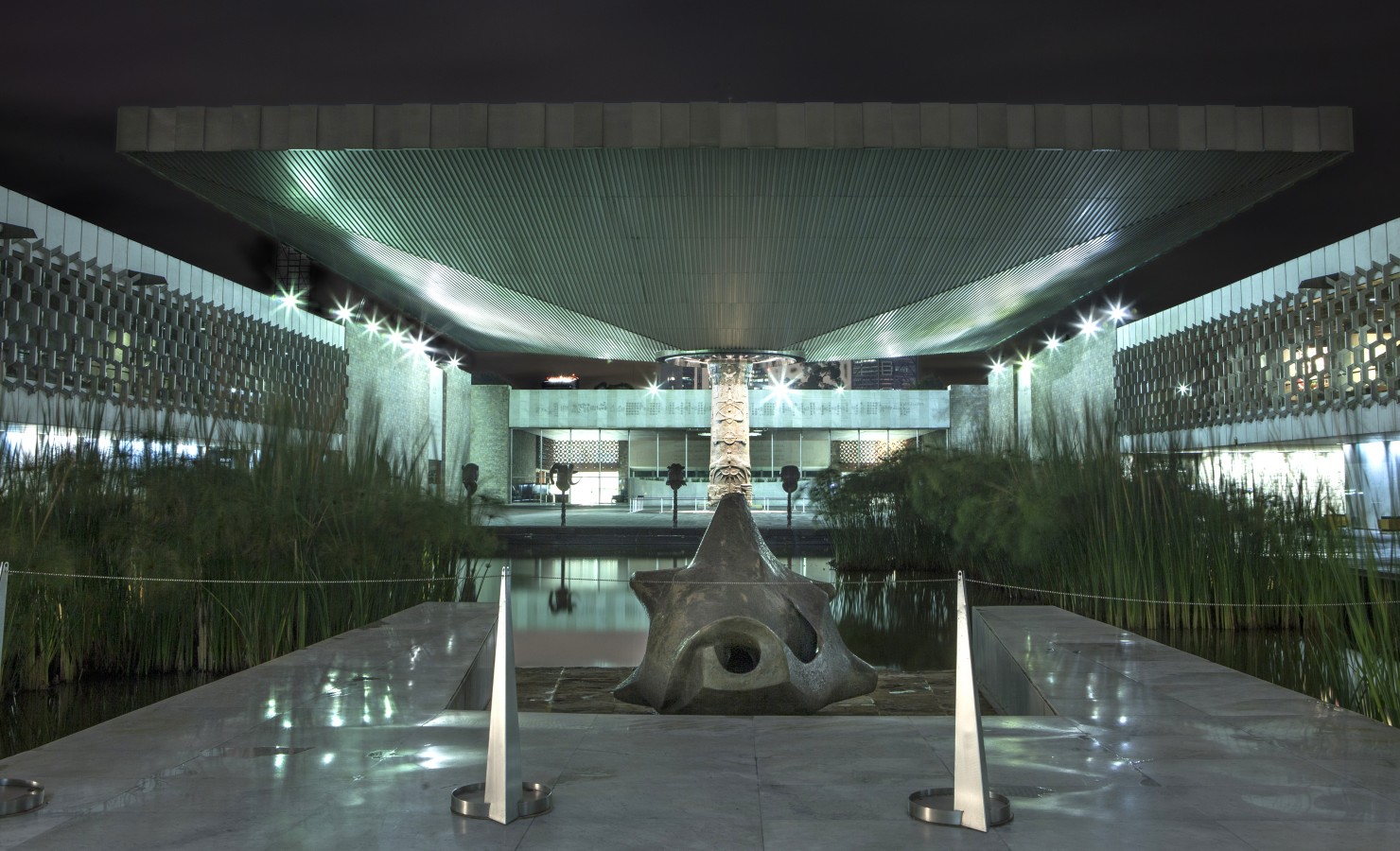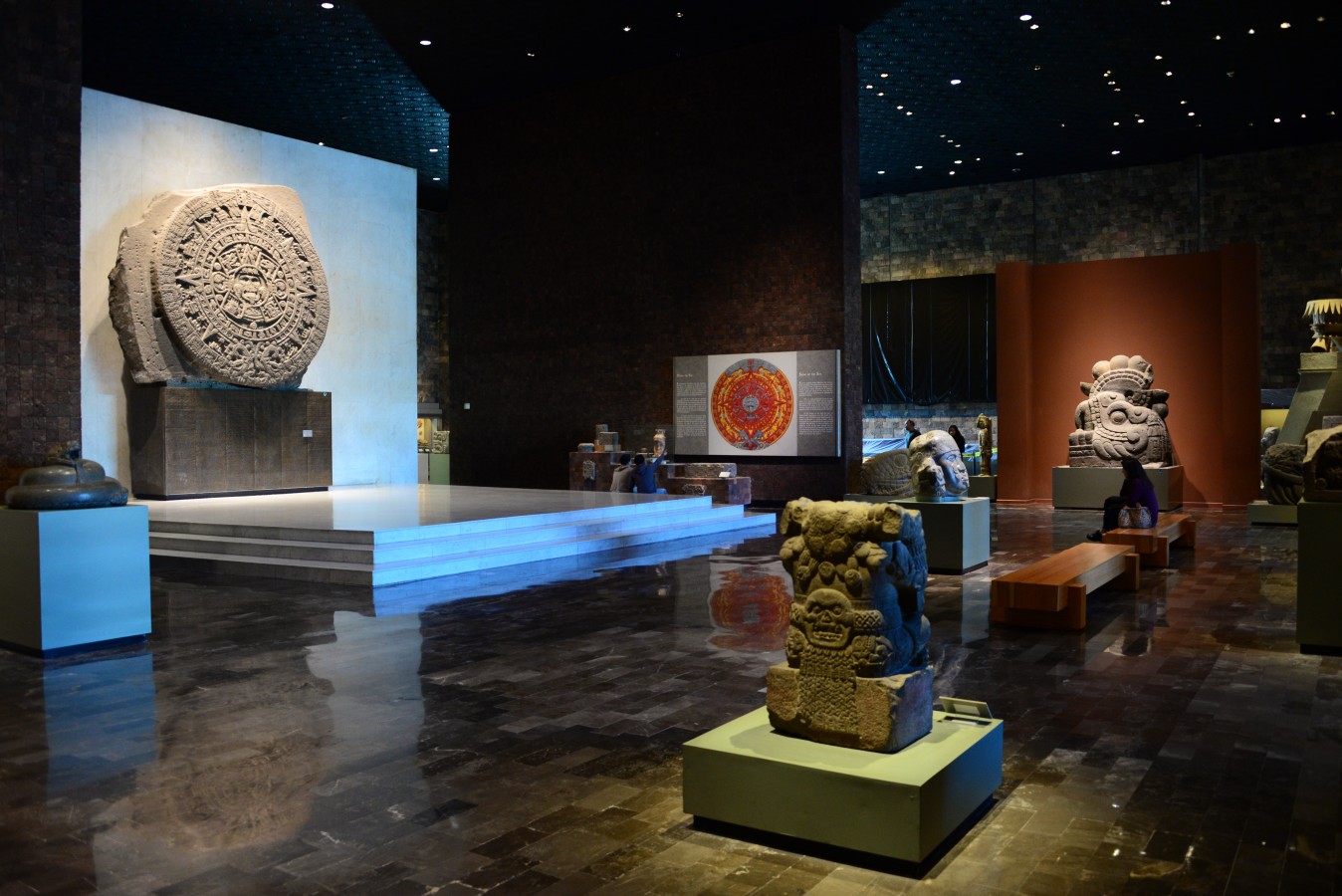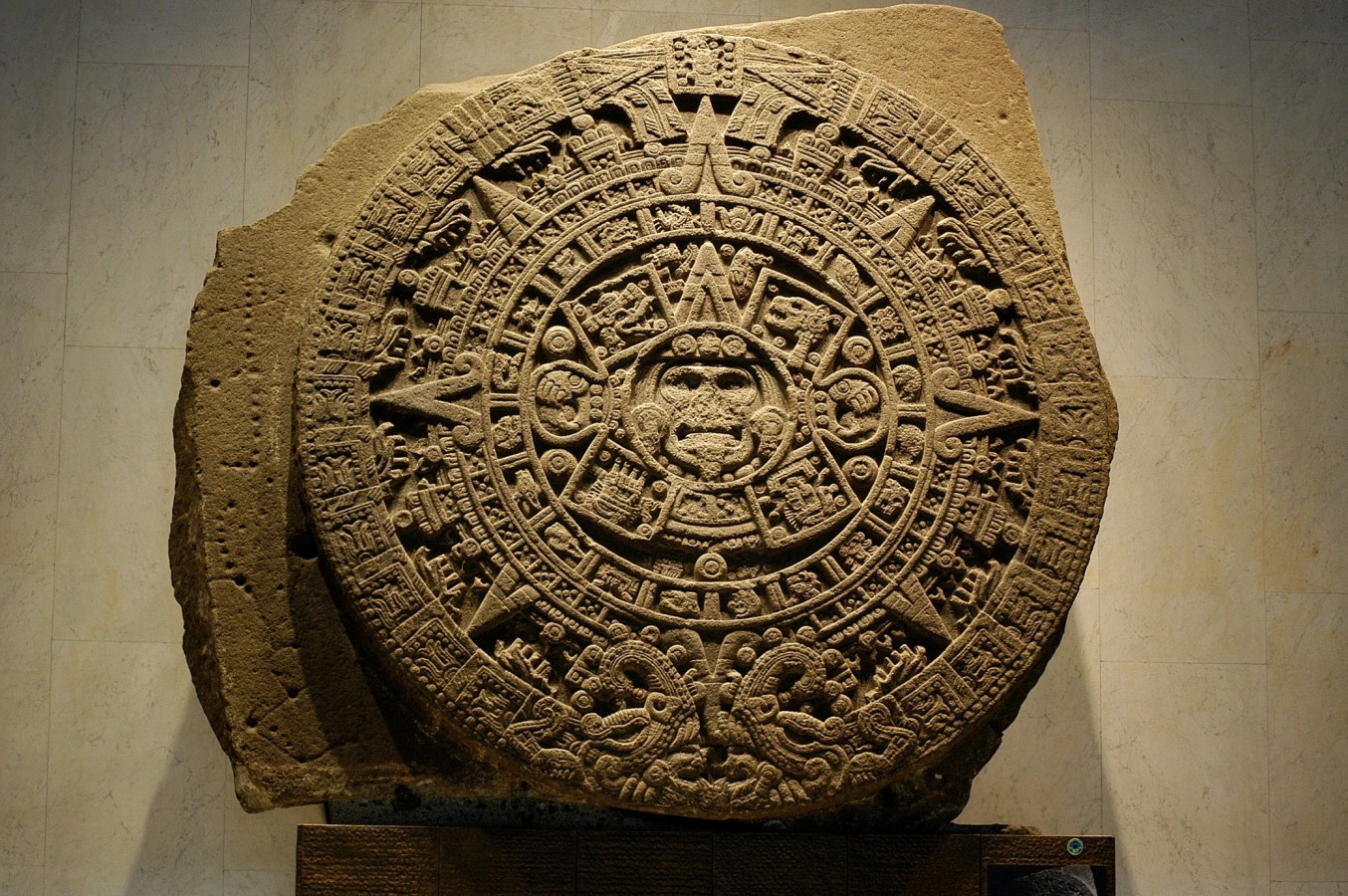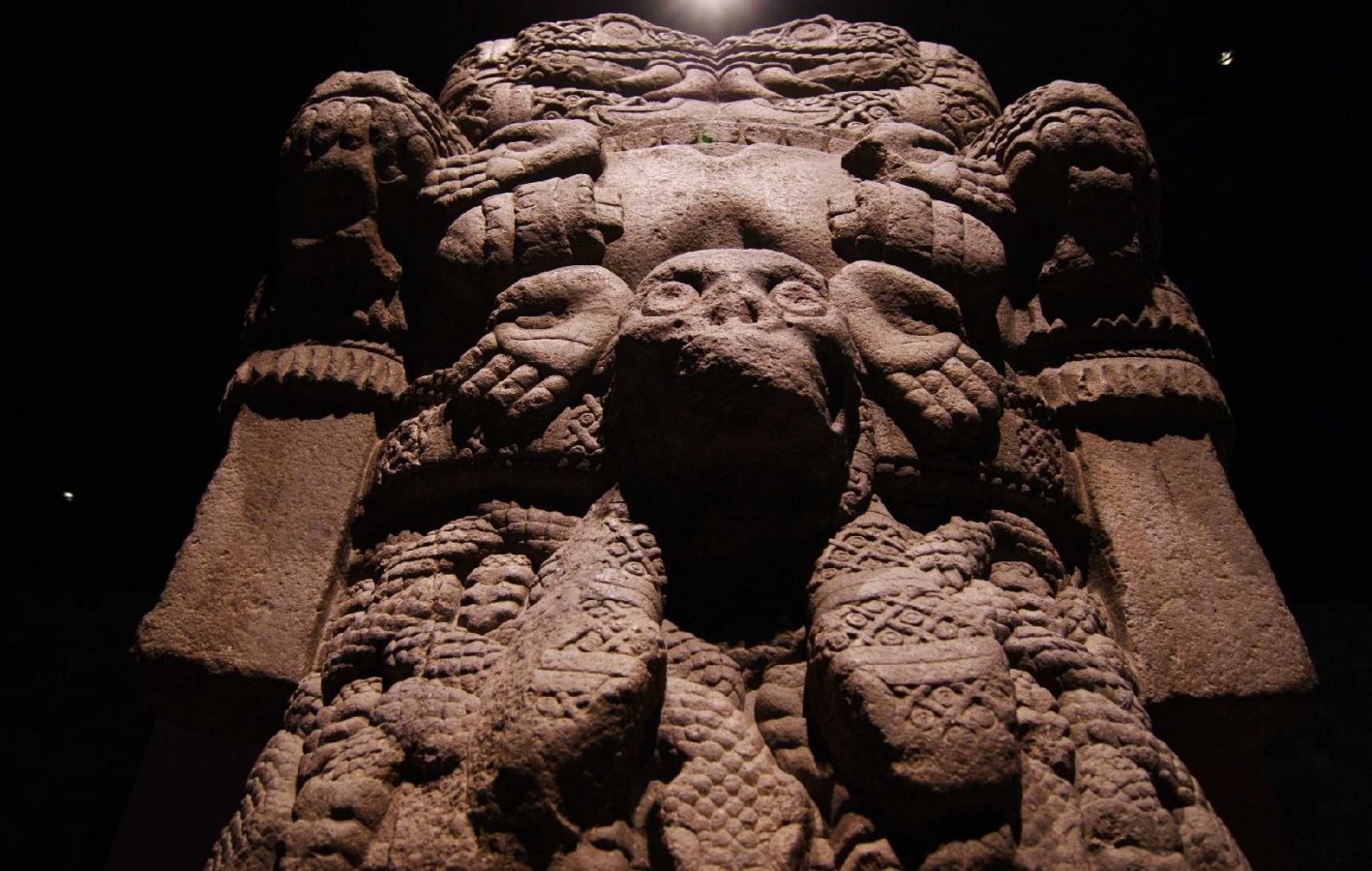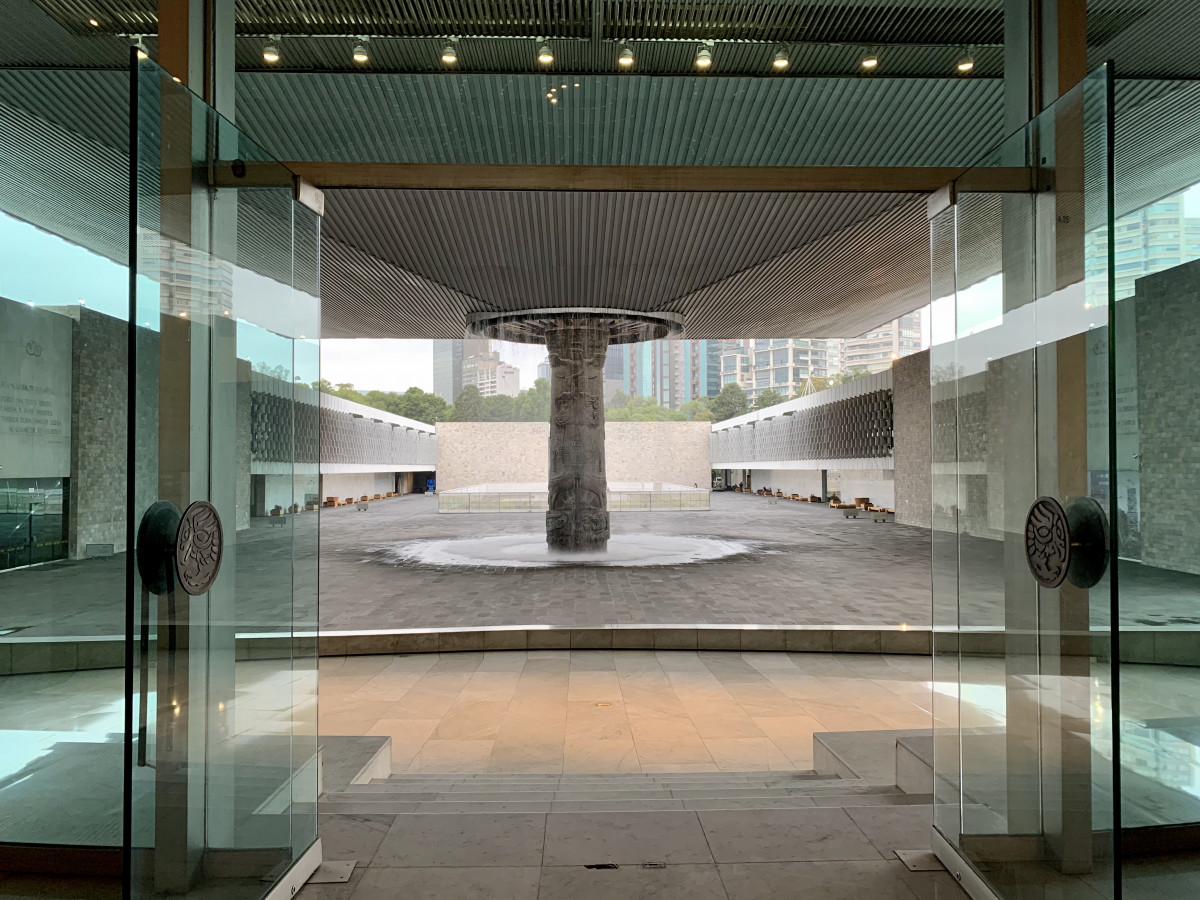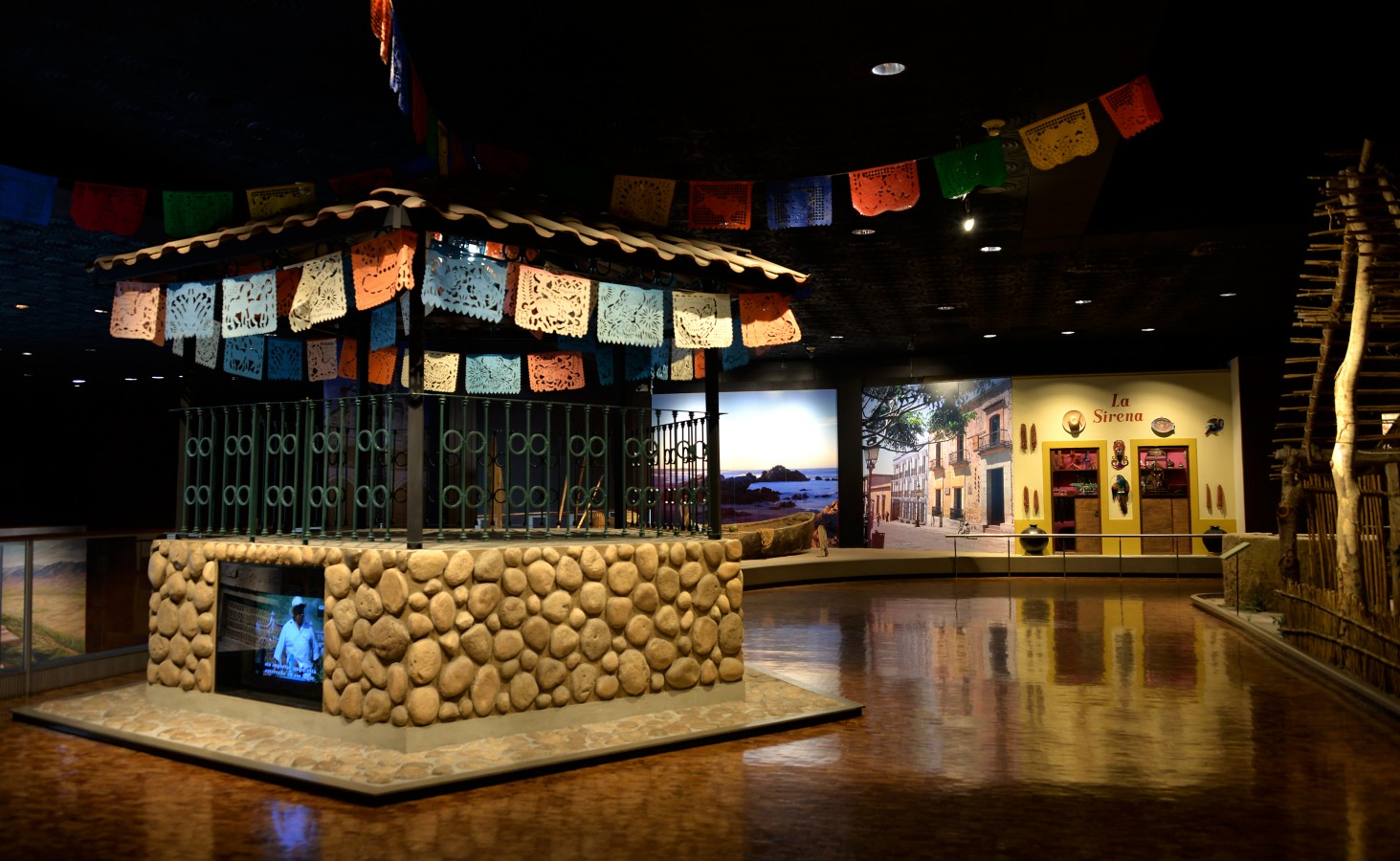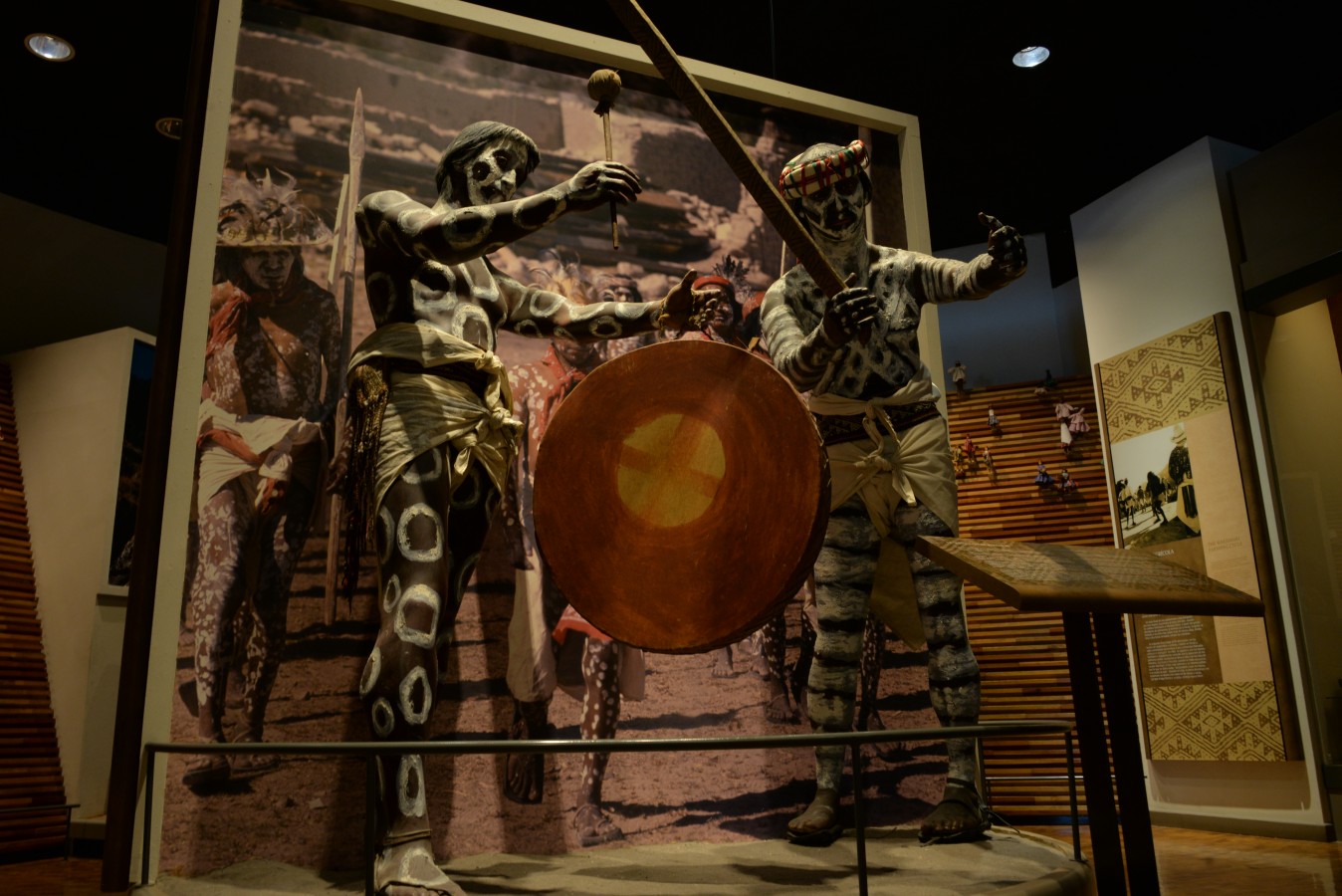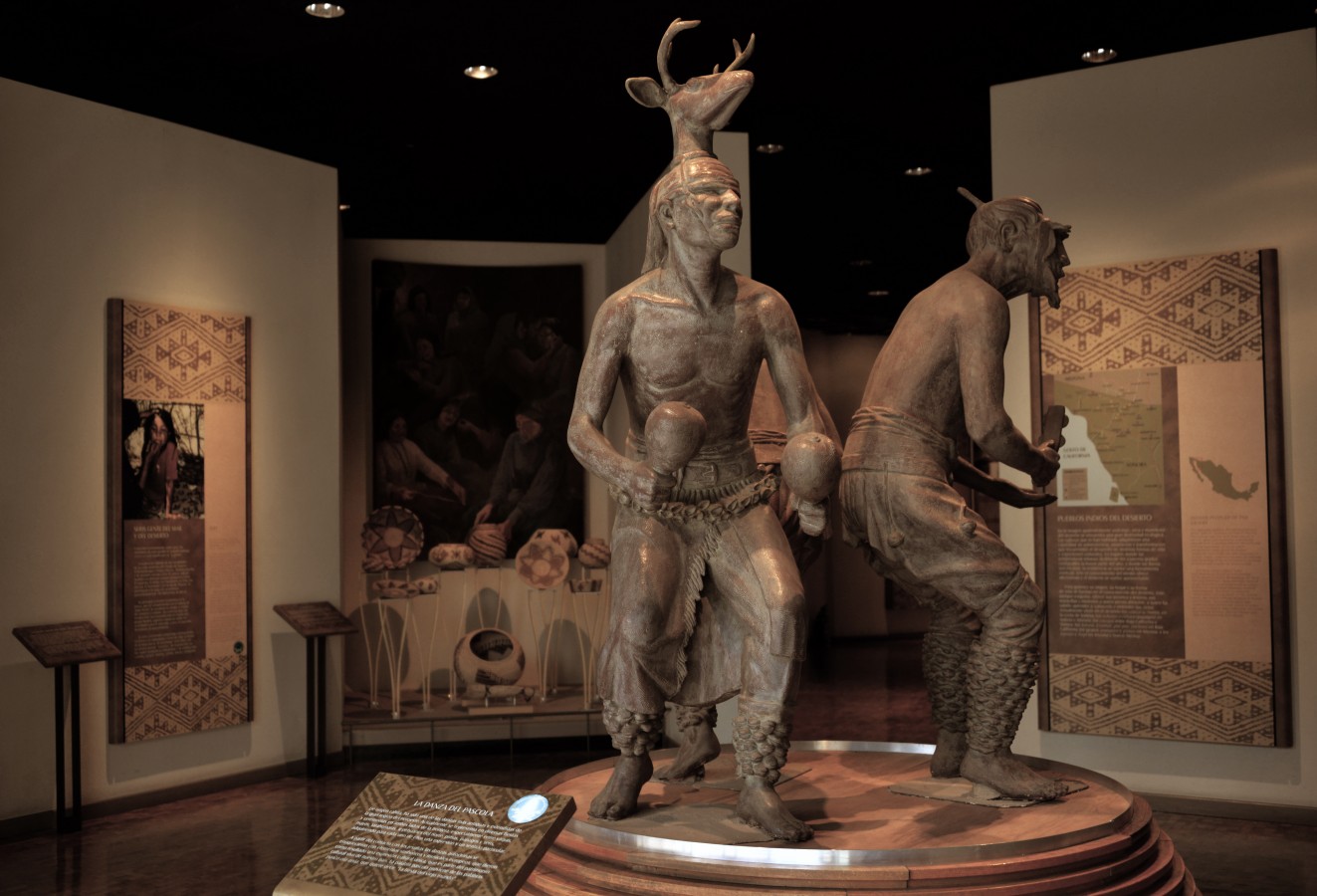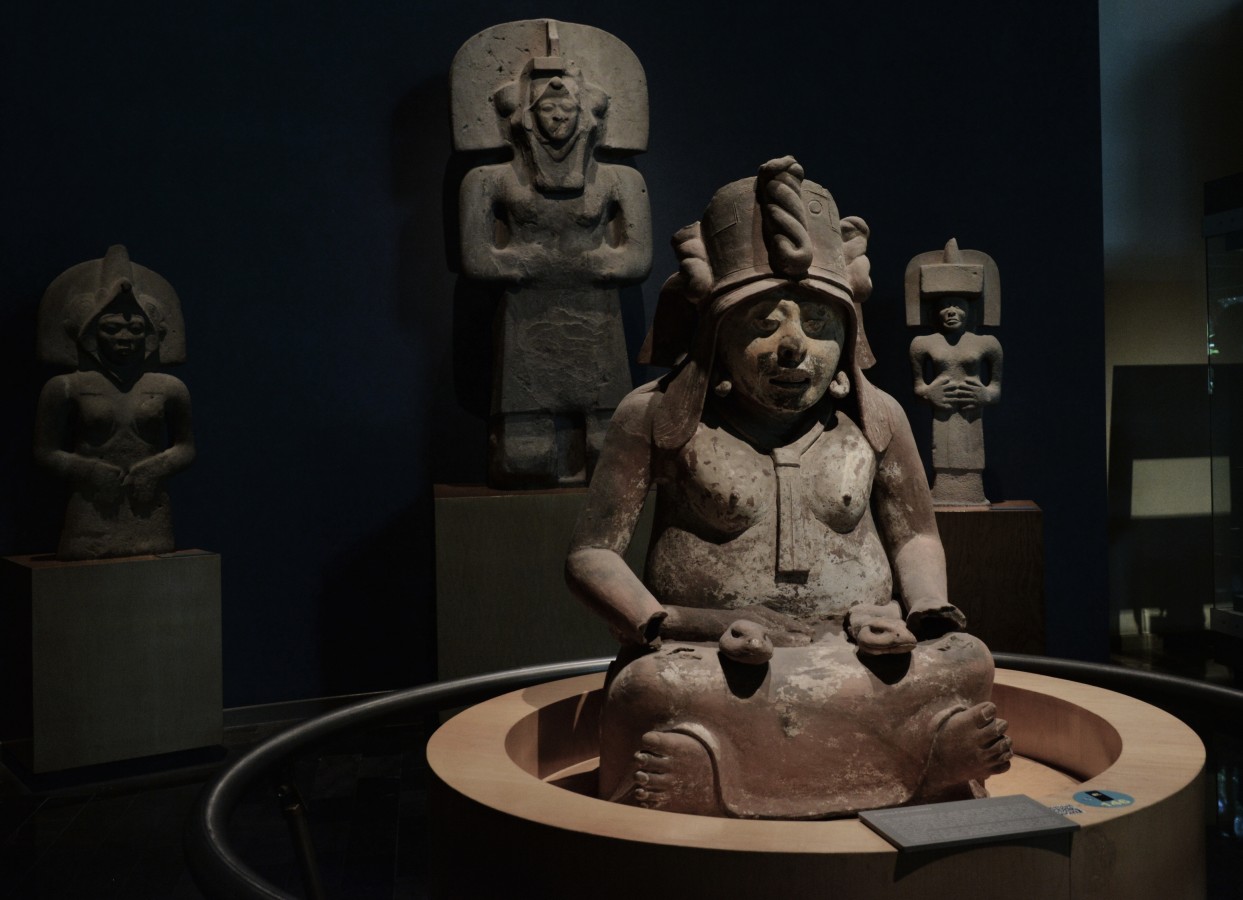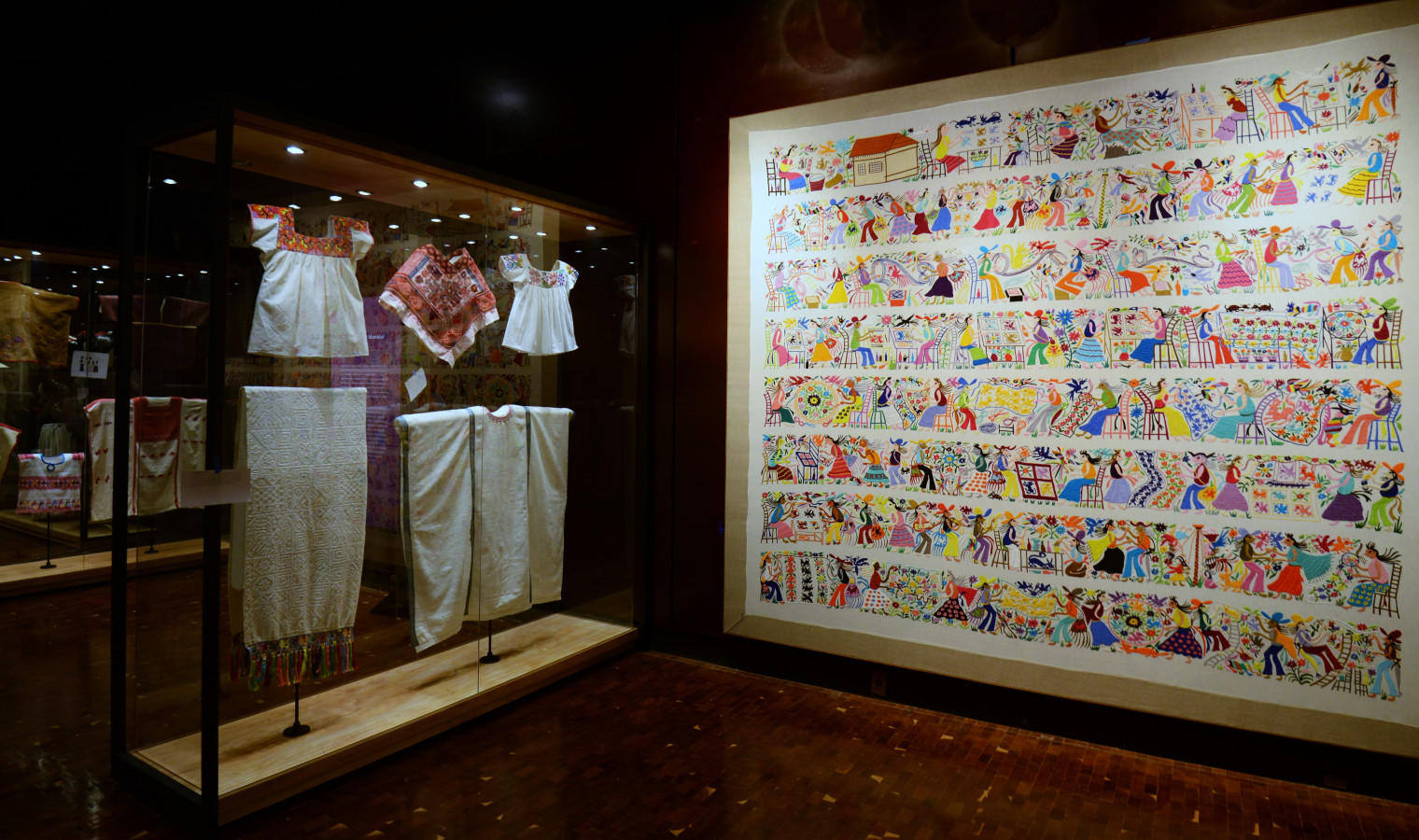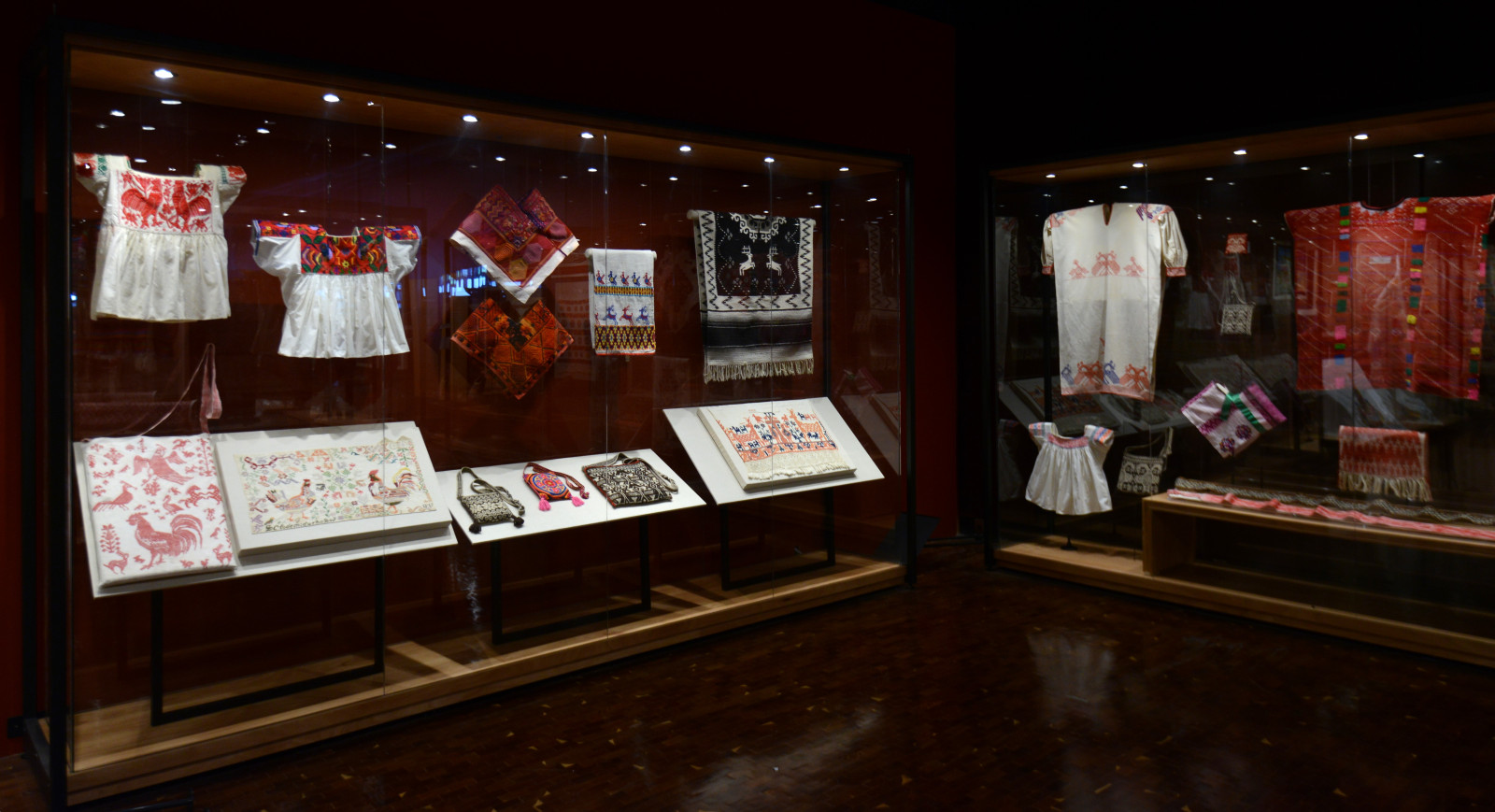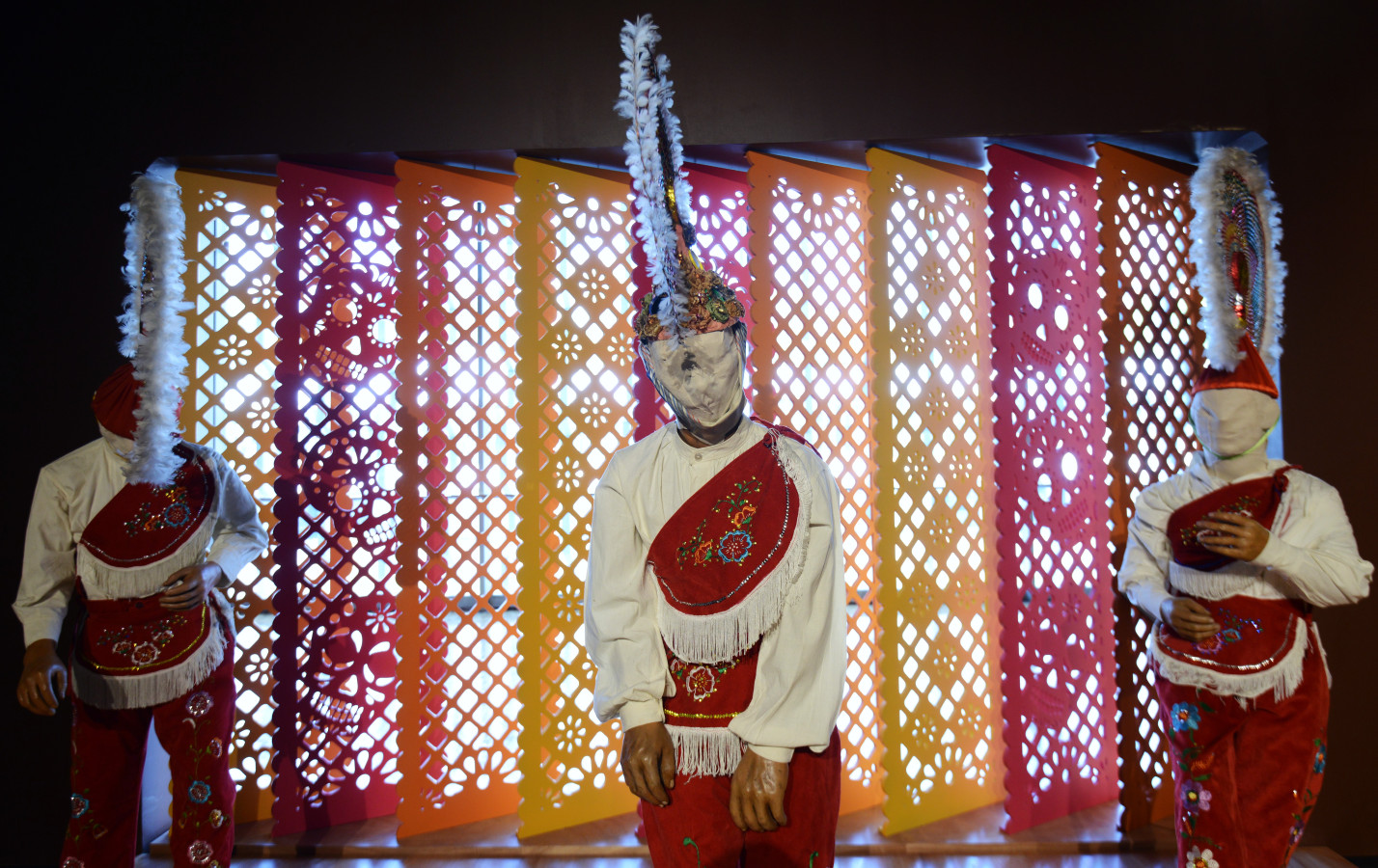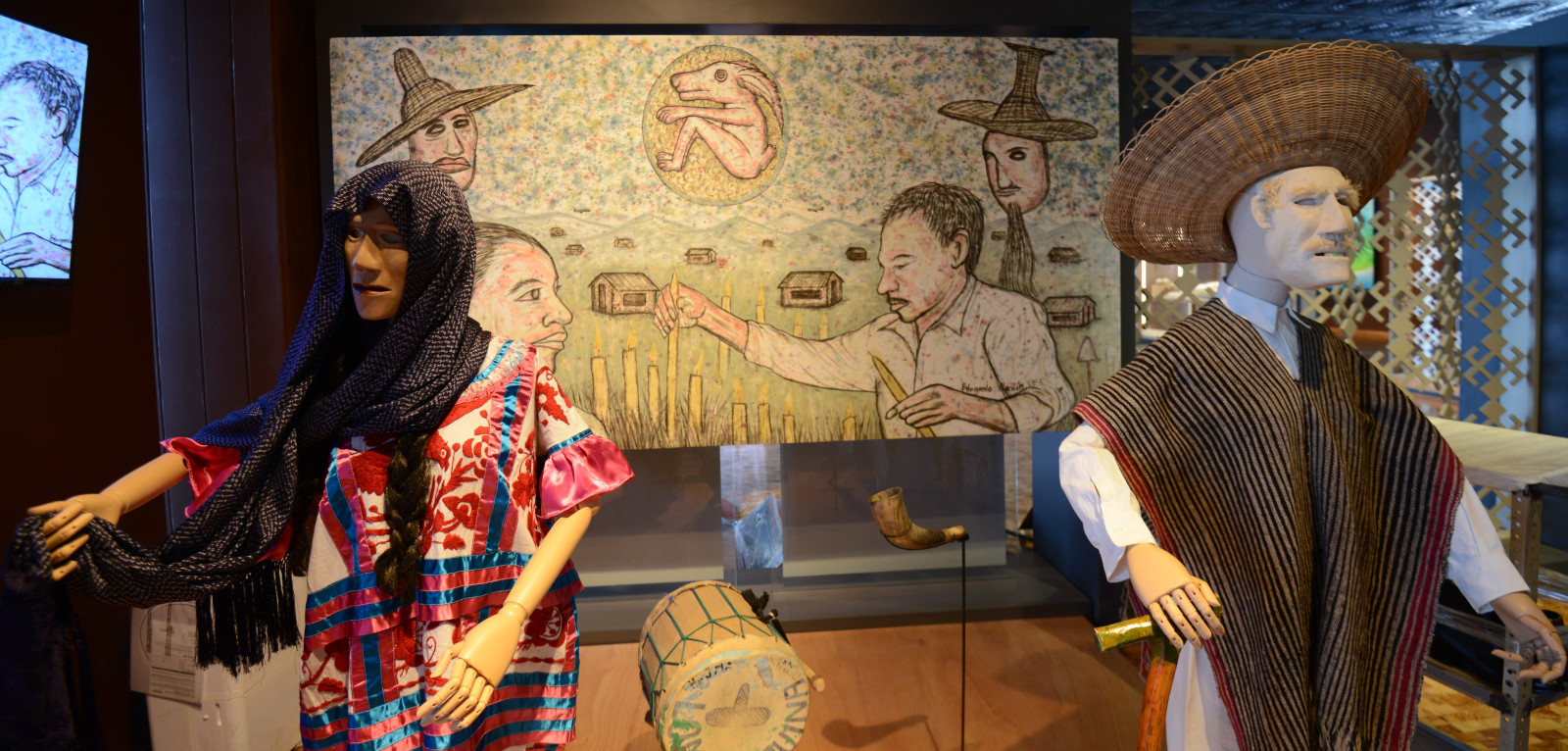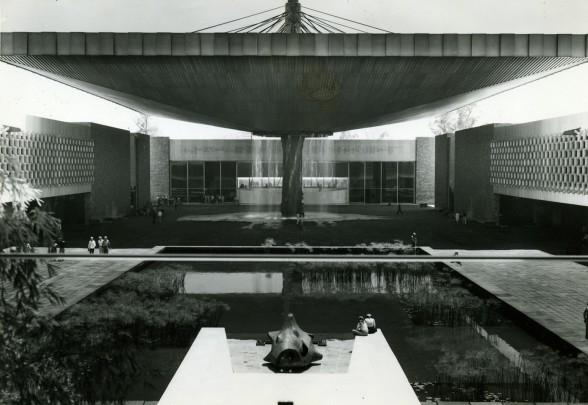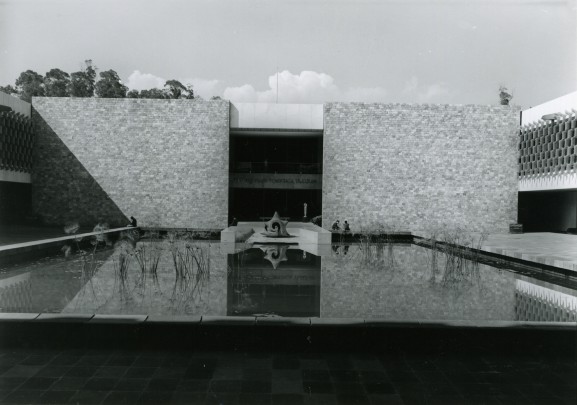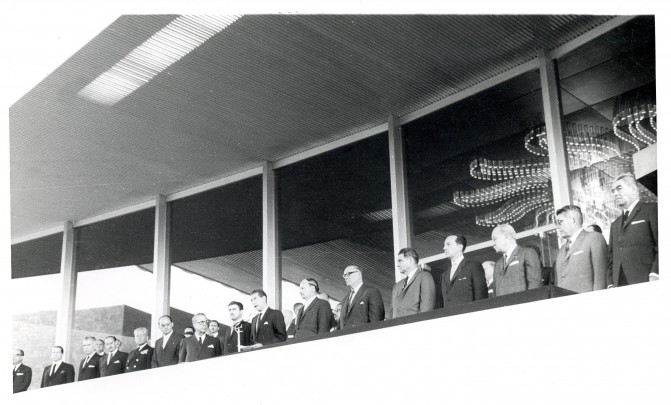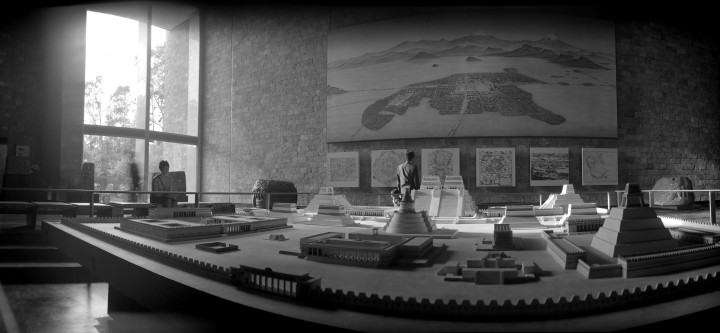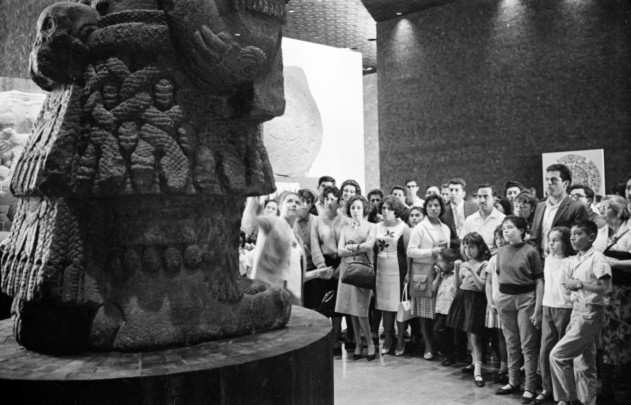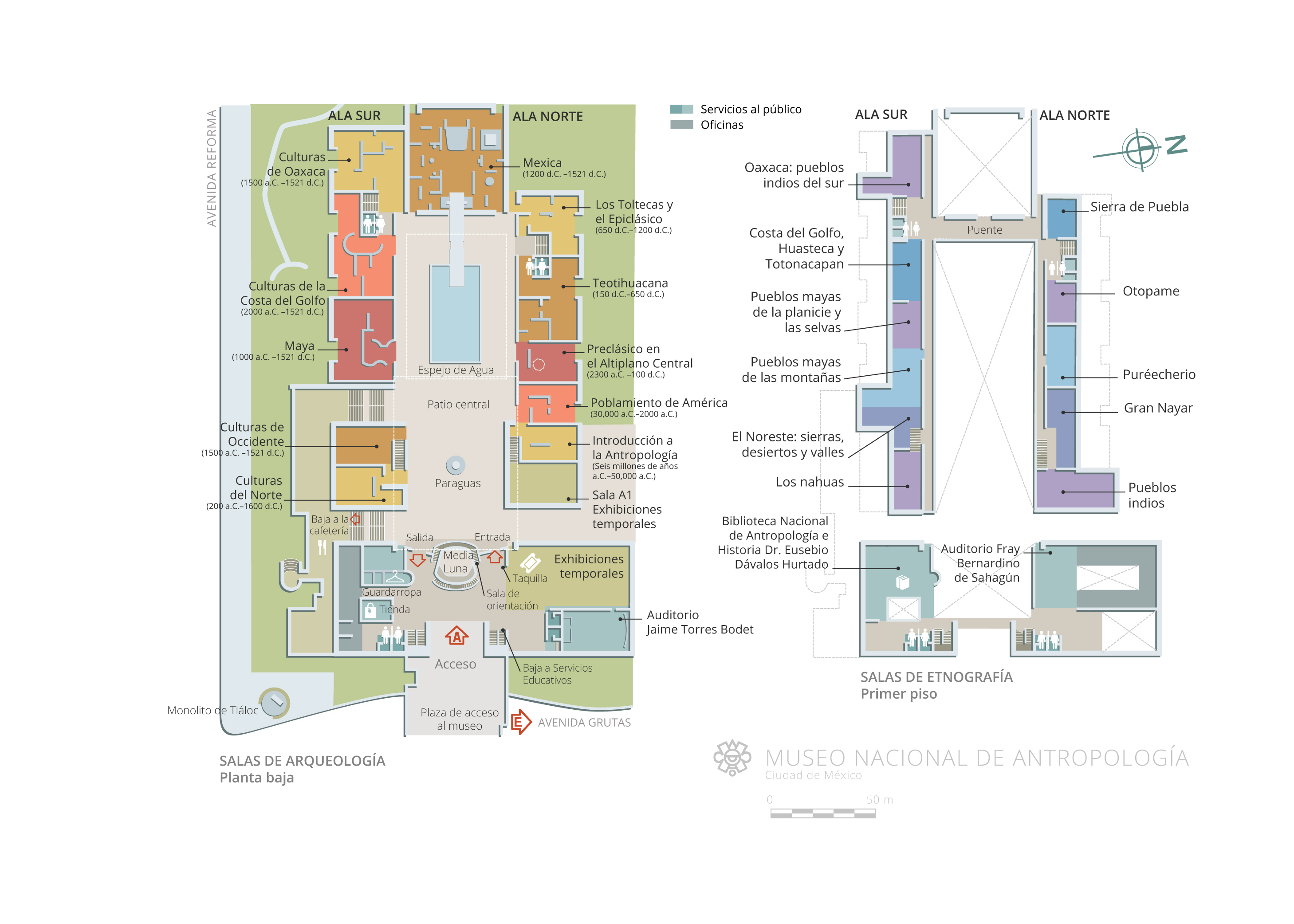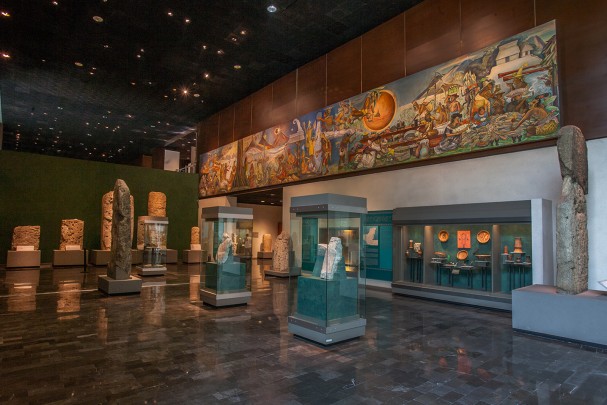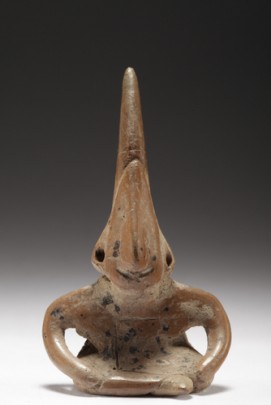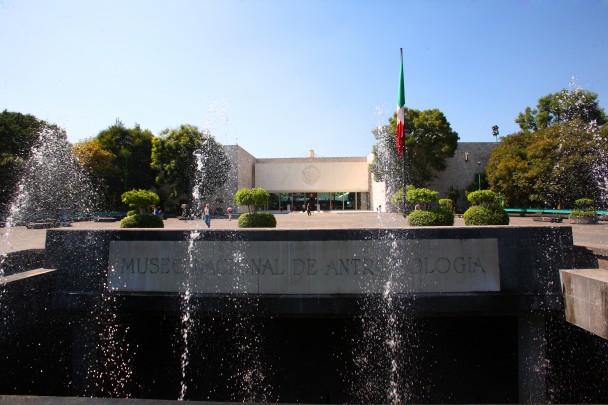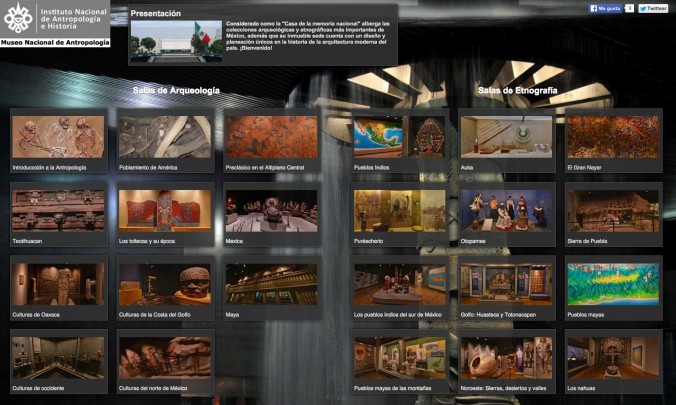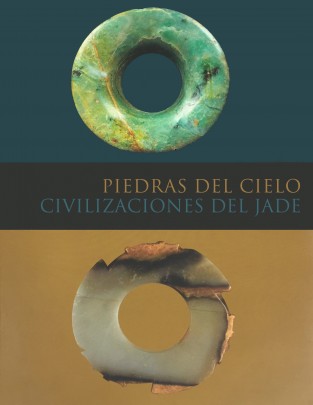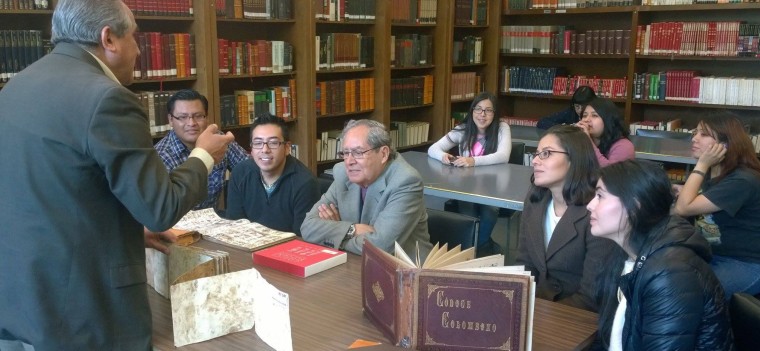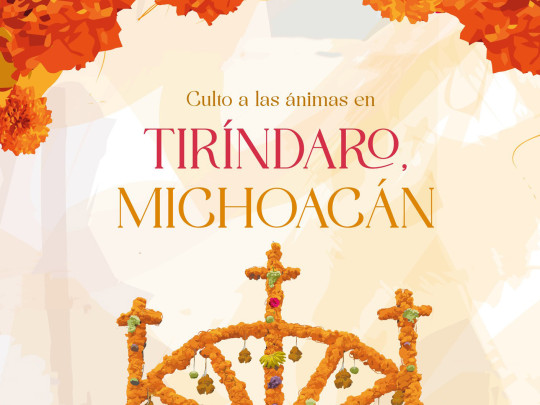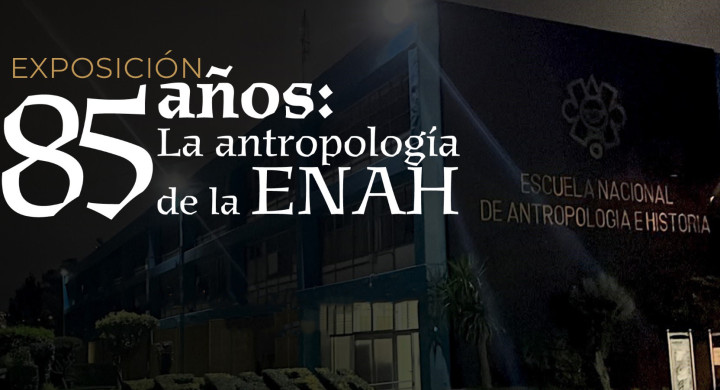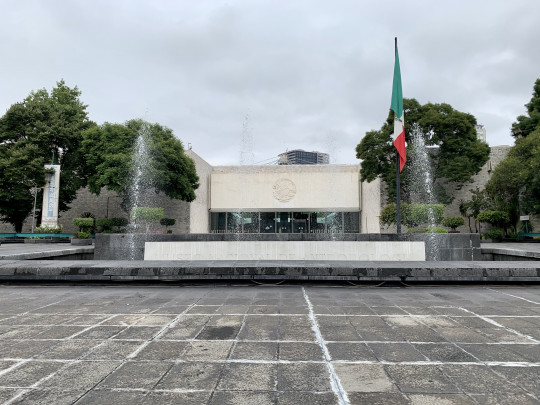More than 50 years since its inauguration, the National Museum of Anthropology remains one of most important symbols of Mexico’s national identity, and an inspiration for generations of Mexicans seeking to discover their cultural roots. Its architectural design and impressive collections have earned it the reputation as one of the world’s leading museums. On September 17, 1964, President Adolfo López Mateos opened the doors to this museum, which is set in the heart of Chapultepec Park and has a total built area of 70,000 square meters.
The museum was formerly on Moneda Street—a site now occupied by the National Museum of World Cultures—but the premises no longer met the needs for the protection, research and dissemination of the institution’s archeological and ethnographic collections. Since the beginning of the twentieth century and as part of the International Congress of Americanists, Justo Sierra referred to the commitment needed for Mexican governments to open a new museum building. Despite several attempts, this objective was only achieved in the 1960s.
Jaime Torres Bodet was the person responsible for making this museum project possible. As Minister of Public Education, he embarked on a series of policies to promote education in Mexico and drew up the a museum development plan that included the [new] National Museum of Anthropology (as well as the founding of the Museum of History, the Museum of the Viceroyalty, and the Museum of Modern Art).
During the López Mateos administration, Torres Bodet assembled a team to define the overarching concepts for the museum, setting up a board of directors to plan and build the new National Museum of Anthropology, presided by the architect Ignacio Marquina. This group worked with around 40 scientific advisors and began to operate as an independent body expertly coordinated by the National Institute of Anthropology and History (INAH).
Pedro Ramírez Vázquez was commissioned as the architect, and he conceived the project not as a simple collection of artefacts but a part of Mexico’s cultural heritage. Respect was therefore given to the traditions of pre-Hispanic peoples, preserving their enduring cultural values but with new solutions in keeping with contemporary techniques and materials; for example, in order to emulate pre-Hispanic temples, stone was chosen as the basic building material. The 22 permanent galleries and temporary exhibition rooms—measuring a total of 323,000 square feet—were planned around two main themes: pre-Hispanic art and the ethnographic history of Mexico’s different regions. The architect’s studio coordinated archeological and ethnographic explorations, organized the transport of large artefacts from different parts of Mexico, and supervised the transfer of the collection previously held in the museum on Moneda Street.
A team of researchers, scriptwriters, exhibition designers, education specialists, and technicians was specially assigned to each gallery. Anthropological, archeological and ethnographic criteria were reconciled to give visitors a coherent and homogeneous experience. On the ground floor, 11 galleries focus on archeology, from the first settlers in the Americas until the Mesoamerican Postclassic era (the Teotihuacan, Toltec, Maya, Mexica, Oaxaca, Gulf Coast, Western, and Northern cultures). These are arranged in chronological order around the central courtyard, starting on the right-hand side and finishing in the Mexica gallery. After the Oaxacan Cultures gallery, the displays are ordered geographically. On the second floor, ethnographic exhibits from the cultures of indigenous peoples still living in Mexico today are displayed in [a further] 11 galleries.
The “Dr. Eusebio Dávalos Hurtado” National Library of Anthropology and History—one of the largest of its kind in Latin America—is another spectacular part of this museum complex. In addition to its many works on history, anthropology, archeology, linguistics, ethnohistory and other related sciences, it is also an archive for codices, original records of the Spanish Inquisition, nineteenth-century journals and books from various religious orders (Franciscans, Dominicans, Augustinians, Jesuits, Carmelites), incunables, specialist magazines, plans, maps, annals, prayer books and engraved testimonies by people who lived during the 1910 Mexican Revolution, as well as recent research papers and theses. Works of art by leading contemporary Mexican painters and sculptors such as Rufino Tamayo, the brothers José and Tomás Chávez Morado, and Manuel Felguérez, make an invaluable addition to the overall exhibition design.
The sheer size of the collection held by the National Museum of Anthropology makes it hard to make a shortlist of artefacts. However, the most representative displays include the Monolito de Tláloc (“Monolith of Tláloc”), standing guard outside the entrance: the Piedra del Sol (“Sun Stone”), a colossal monument with a solar disk caved as a series of concentric rings with various elements; the Piedra de Tízoc (“Tízoc Stone”), a round sculpture with a sculpted image on the top side and a cavity at the center; the Olmec Cabeza Colosal 6 (“Colossal Olmec Head 6”), carved out of volcanic rock; a Chac Mool in his customary position, lying down with his arms and legs bent, and his head turned completely to one side; the Atlante de Tula (“Tula Atlas”), a Toltec column that supported the roof of Pirámide B (“Pyramid B”) of this pre-Hispanic site; the Máscara de Pakal (“Pakal’s Mask”), made out of around 200 jade pieces, some of which were sculpted to form the forehead, cheeks and particularly the nose, eyelids and lips; shell was used for the eyes and obsidian for the iris.
More than 50 years since its inauguration, the National Museum of Anthropology remains Mexico’s most iconic repository of the country’s indigenous legacy, as well being as a world-class museum thanks to the quality of its construction, innovative design, art, and symbolism.
Colonia Chapultepec Polanco,
Delegación Miguel Hidalgo, C.P. 11560,
Ciudad de México, México.
By public transport: Metro Auditorium (Line 7) and Metro Chapultepec (Line 1). The Museum is located approximately 1.3 km from the stations.
By bicycle: you can plan your route with the ECOBICI system in Mexico City at https://www.ecobici.df.gob.mx. Bicycle parking is located below the main concourse.
-
+52 (55) 4040 5300
-
This email address is being protected from spambots. You need JavaScript enabled to view it.
-
WWW
-
TWITTER

